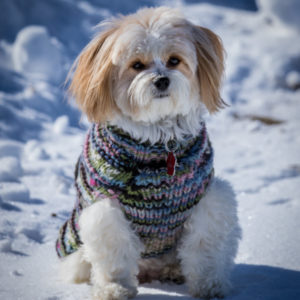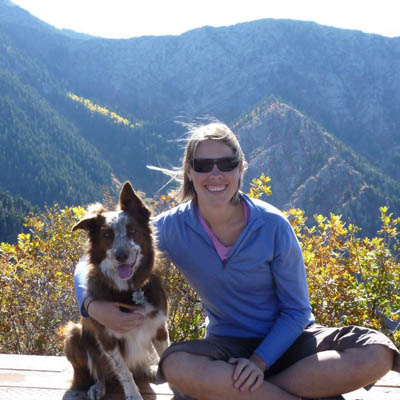 Winter outdoor recreation provides us with a variety of opportunities to enjoy the snow and cold weather. And if you have a dog, they can participate in many of these options and enjoy winter too. From ski touring to wintry walks, you and your faithful canine companion can frolic in the snow throughout the season.
Winter outdoor recreation provides us with a variety of opportunities to enjoy the snow and cold weather. And if you have a dog, they can participate in many of these options and enjoy winter too. From ski touring to wintry walks, you and your faithful canine companion can frolic in the snow throughout the season.
Dogs are not wild animals. Although domesticated dogs are cousin to wild coyote, wolf, and fox species, thousands of years and generations of living in homes with people has made our dogs less capable of surviving in the winter. There are some things that you should consider when taking your dogs on outdoor winter adventures and also some great opportunities for fun together.
Your dog has a fur coat, but that doesn’t mean it will be warm enough for every adventure. Think about the layers of clothing we don to stay warm. Even if your dog has a thicker coat, it may also need an insulation or moisture protection layer to help it to stay comfortable. The breed of your dog may influence if it already has a closet of attire at home, but think functionally before saying, “My dog doesn’t wear clothes!” When it is especially cold out, consider how you will protect your dog from factors like hypothermia and frostbite.
On backcountry adventures, a set of booties can defend against snow and ice balls building up between your dog’s pads. These balls can be uncomfortable for your dog, and can lead to frostbite if they remain in place too long. Booties also protect your dog’s paws from salt and other road chemicals on walks around the neighborhood.
As always, think safety first for your pet. An extended ski or snowshoe tour may not be the safest adventure for your dog, but shorter routes might be the perfect thing to give your dog the snowy playtime it needs. Watch off-leash dogs in the backcountry. And for their safety and yours, keep dogs away from avalanche terrain, terrain traps, and thin ice near waterways.
Be sure to clean up after your dog on winter hikes and adventures. It’s easy to be lazy and hide dog poop under a layer of snow. However, after the snow melts, all that waste will still be there. There is nothing worse than hiking a popular trail on the first warm spring day and smelling the fragrance of a winter’s supply of dog poop! In addition to negatively affecting other people’s experience, bacteria and high nitrogen and phosphorus levels from dog waste get washed into creeks and rivers during runoff, a major contributor to water pollution.
Sometimes it’s just too cold for you or your dog to spend much time outdoors. On those extra frigid days, make sure to give short outdoor bathroom breaks, but consider alternative forms of activities to keep your dog stimulated indoors. Indoor fetch or tug might be more fun than freezing your tail (and theirs) off on a long walk. Mental challenges can be as tiring for dogs as physical activities. Games like find-it or basic canine scent work can help keep your energetic dog occupied indoors. Scent work challenges help develop search and rescue-type skills for pet dogs. It’s fun for you and your dog and there are even competitions if your dog gets really good a using his nose!
Ultimately, you know your dog, its abilities, and tolerance for winter. You and your dog should enjoy winter in a way that makes you both comfortable. Older and young dogs can be more susceptible to challenges from cold, so make choices with your dog’s best interests at heart. Winter can be an incredible opportunity to adventure with your dog and winter recreation offers something for everyone.
Lara Carlson is the Community Programs Director at Walking Mountains Science Center. She can often be seen romping around through deep piles of snow with her dog, Mia. Lara and Mia volunteer with the Eagle Valley Humane Society’s free basic dog training class, join them Tuesday nights at the Eagle Fairgrounds.









